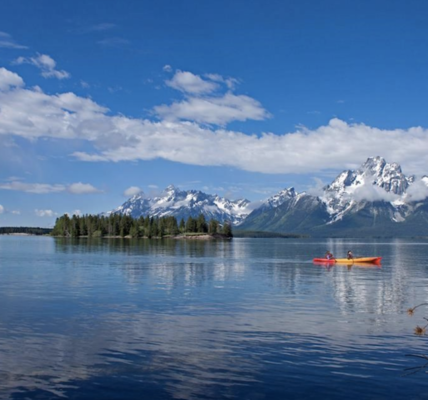One of the most famous tourist stops in Yellowstone National Park, the Morning Glory Pool is well known for its brightly colored rings, each of which is its own ecosystem of different bacteria. Once a deep blue and now a bright rainbow of colors, Yellowstone’s Morning Glory Pool is an ever-changing sight to behold for its visitors.
History
Named for its similarity to the morning glory flower, the pool is famous for its stunning, bright blue waters. E.N. McGowan, the wife of a Yellowstone Park superintendent, named the pool Convolutus—the Latin term for morning glory—in 1883. By 1889, the pool had become a popular spot for park visitors due to its colorful waters.
In the early days of the park’s founding, the pool reportedly had a scalloped outer edge about six to 10 inches wide and two to five inches high. However, this edge began to disappear as visitors began taking pieces of it as souvenirs. Though the practice is now banned, the natural phenomenon has yet to return to its original dimensions.
The vibrant blue color of the water is the result of a type of blue bacteria that lives in the hot spring. These thermophilic bacteria thrive in the pool’s heat and dye the water the iconic deep blue that tourists have come to love.
Recent News
Unfortunately, many visitors have left their marks on the pool in the form of trash. For over a century, the Morning Glory Pool has suffered from littering that has, in turn, affected its appearance as we know it today. Objects such as coins and bottles have built up in the center chasm over the years, blocking some of the thermal vents that supply the water with its intense heat. The lack of heat has cooled the outer edges of the pool and allowed for other bacteria—yellow in color—to slowly encroach upon the center. This has resulted in the stage colorations the pool is now most known for: yellow at the outer edges, transitioning to green, then blue in the center, where the pool is hottest.
In recent years, the pool periodically erupts after earthquakes, ejecting various trash items from its chasm. Those who love the site hope that it will eventually eject enough trash for the blue bacteria to thrive once again.
When to Visit
Located on the Upper Geyser Basin of Yellowstone, this breathtaking pool is only a mile’s hike from the famous Old Faithful Geyser. Because of the terrain, however, it’s recommended that visitors stop by the site between the months of March and November. The pool can be difficult to reach during the winter, as snow can block the path and make it slippery.






